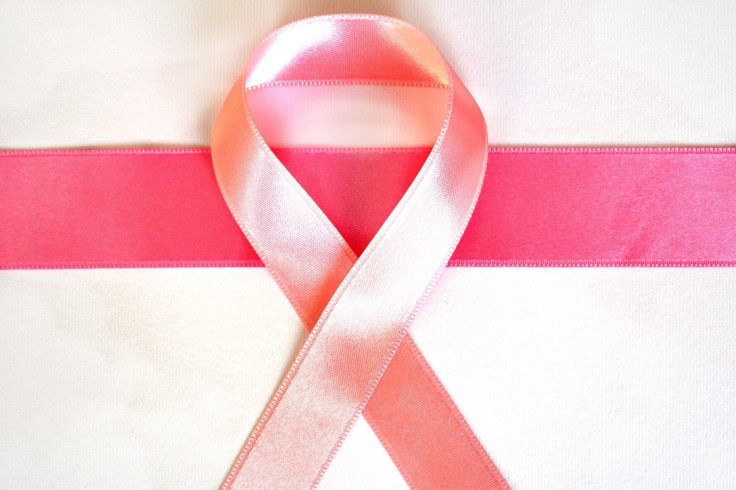PCR & machine learning could detect breast cancer risk with 94% accuracy
The new study funded by top US research organisations like the National Institutes of Health, Harvard Cancer Center Ovarian Cancer SPORE, Dana Farber Cancer Institute and others reveals that mutations in the BRCA1 and BRCA2 genes associated with breast and ovarian cancer can be detected without sequencing.

A recently published research paper in Nature Communications suggests that breast cancer-causing genes can be detected with gene sequencing. Earlier such definitive gene detection required gene sequencing which is quite expensive.
The new study funded by top US research organisations like the National Institutes of Health, Harvard Cancer Center Ovarian Cancer SPORE, Dana Farber Cancer Institute and others reveals that mutations in the BRCA1 and BRCA2 genes associated with breast and ovarian cancer can be detected without sequencing.
The research has been done jointly by scientists at the Brigham and Women's Hospital, the Medical University of Lodz and the Dana Farber Cancer Institute.
How does it work?
Rather than detecting the mutations in the cancer-causing genes, the researchers targeted the pathways that made those mutations. The scientists found a way to detect functional changes that lead to mutations in the genes. They looked for specific signals in the blood that activated the genes towards cancer-causing mutations.
For the first time, we have found a signal in the blood to detect pathology associated with increased cancer risk.
How is it done?
The researchers used microRNAs to detect these signals in blood which regulated mutations in the cancer-causing genes. In recent times, microRNAs have found their use as a disease biomarker.
Similar to a car engine being knocked out when a car part is faulty, the DNA repair system breaks down if these microRNA constellations were found present. The absence of such RNAs means that the DNA repair system is working fine.
The scientists screened 653 blood samples for a set of six types of microRNA constellations. Four of these are for the US, and the rest two for India and Poland.
The study revealed half of the samples had RNA markers and half didn't.
Then the researchers sequenced to know the exact microRNAs involved in every sample and created a comparative data sheet of BRCA gene mutations and these microRNAs. Machine learning detected the signature specific to the microRNAs that caused the mutations. This resulted in an accuracy level of 94 per cent in detecting mutations. This confirmed that this could be used as a way to detect inherited cancer risk.
Instead of the sequencing used to detect the microRNA, labs could use PCR tests (similar to those used for COVID), to know the microRNAs. So with the help of PCR and machine learning, one can easily detect the cancer risk in people.
What does it mean?
The two cancer-risk genes BRCA1 and BRCA2 form an essential part of the pathway that is used for DNA damage repair in the body. Any mutations in them can affect the DNA repair ability of the body which could result in the passing down of defective genes. This forms the basis of the inherited cancer risk associated with these two genes.
They are usually responsible for causing pancreatic, ovarian, breast and prostate cancer. With this discovery screening for such diseases becomes easier.
This method also gives a more comprehensive idea of cancer risk compared to gene sequencing as it detects the signal changes in the pathway, not any particular gene or component causing that. So, any molecule causing these signalling changes can be detected. This is crucial as many genes remain unknown even today.
"We are constantly discovering new genes and mutations that could impact this pathway, so it is hard for genetic testing to keep up. A test that is independent of that, that shows you have a problem in the pathway, could more broadly identify people at risk."
Why is this crucial?
Close to one million people carry the BRCA1/2 gene mutations but they aren't aware of it. In the US alone, 10 per cent of the cancer-risk population know that they are BRCA1/2 mutation carriers. In countries like India, the situation is even worse as the gene testing system for mutations isn't available. In such a situation an accessible and affordable system like this could help better screening, thereby reducing cancer-related deaths.
What if we had an accessible and affordable test for inherited cancer risk that you can get done as an annual physical, the same way we test for diabetes or heart disease risk? These study results suggest that such a test is in the realm of possibility.
How will it help?
This new development makes way for faster, easier and better detection of inherited cancer risks. By using this strategy, cancer risks can be detected in people in a much more cost-effective and affordable manner. Moreover, this could be made easily accessible all over the world. This is particularly crucial for people with a family history of cancers, specifically ovarian and breast cancers.
For people with a family history of cancers, it is recommended to undergo genetic testing so that they are screened for mutations. Further screening tests are recommended for those who test positive for mutations of these two genes.
The new method could help in streamlining this cancer detection and prevention process.
Future clinical studies
So far this method shows promise and requires further research. For this, the team is going forward with clinical studies in early-stage ovarian cancer. Previous studies indicate that microRNA constellations were seen when ovarian cancer starts to emerge in patients.
© Copyright IBTimes 2025. All rights reserved.






















